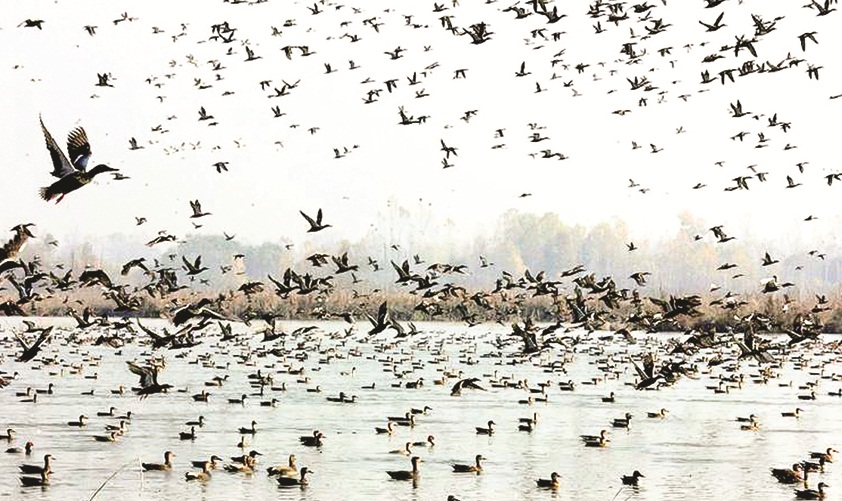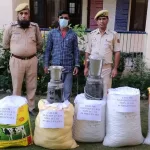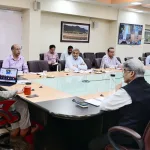Once teeming with migratory birds and flowing with clean waters, the wetlands of Kashmir are now on the brink of ecological collapse. Shrinking in size, choked by pollution, and overtaken by invasive species, these once-pristine ecosystems are in crisis.
From the expansive Wular Lake, among Asia’s largest freshwater lakes, to the delicate marshes of Hokersar, Haigam, and Shalbugh, Kashmir’s wetlands are ecological powerhouses. They support biodiversity, control floods, recharge groundwater, and sustain livelihoods for thousands of families. But over the past few decades, they have been steadily degrading—victims of unregulated urban expansion, climate change, and official neglect.
Wetlands play a pivotal role in Kashmir’s ecology. They absorb excess rainwater, reduce the severity of floods, filter pollutants, and provide breeding grounds for fish and birds. During the winter months, they become a haven for over half a million migratory birds from Central Asia, Siberia, and Northern Europe.
Species such as the northern pintail, Eurasian wigeon, greylag goose, and the vulnerable white-eyed pochard find refuge in Kashmir’s marshlands. Native fish like the Schizothorax, or snow trout, depend on the cool, clean waters of these ecosystems. Aquatic plants, amphibians, and insect life thrive in this watery matrix.
Migratory birds in Kashmir primarily use the Central Asian Flyway, one of the nine major migratory bird flyways globally. This route extends from the Arctic through Central Asia and into the Indian subcontinent. It covers at least 30 countries, and Kashmir lies directly on this route, making it a crucial pit stop.
Migration typically begins in October and continues through November, with birds arriving from countries such as Russia, China, Mongolia, Kazakhstan, and Eastern Europe. The return journey begins in March, when the ice melts in their breeding grounds, and conditions become favorable again. The remarkable navigational abilities of these birds allow them to undertake long, often perilous, journeys guided by the Earth’s magnetic field, sun, stars, and even environmental cues.
Beyond ecology, wetlands are interwoven with the valley’s culture and economy. They provide resources such as fish, fodder, water for agriculture, and reeds for traditional Kashmiri crafts. For generations, communities living along wetland fringes have relied on them for sustenance and employment.
Despite their immense value, Kashmir’s wetlands are rapidly disappearing. Experts estimate that over 30% of Wular Lake has been lost to siltation, weed infestation, and illegal encroachments. Dal Lake, once a jewel of Srinagar, now struggles with untreated sewage, plastic waste, and rampant construction along its shores.
The main threats to these ecosystems include expanding settlements encroached on wetland areas, reducing water spread and disrupting natural hydrology. Raw sewage, agricultural runoff, and solid waste discharge have made many wetlands nutrient-rich, triggering algal blooms and oxygen depletion. Non-native plants like Phragmites and Azolla outcompete native vegetation, leading to habitat degradation.
Altered precipitation patterns and rising temperatures are shrinking seasonal wetlands and affecting bird migration routes.Unsustainable fishing, grazing, and reed harvesting place additional strain on already fragile ecosystems.
Recognizing the ecological crisis, authorities have initiated several conservation projects. The Wular Conservation and Management Authority (WUCMA) has carried out dredging and willow removal along Wular’s banks. Wetlands such as Hokersar, Haigam, and Shalbugh have been designated as Ramsar Sites under the International Wetlands Convention, granting them global ecological importance.
In 2020, the Jammu and Kashmir Wetlands Authority was formed under national wetland management rules, tasked with regulating development and overseeing restoration. However, conservation experts argue that these interventions have been largely cosmetic.
Despite funding and policy frameworks, implementation remains uneven. Overlapping departmental responsibilities, lack of coordination, and limited community involvement continue to undermine progress.
Wetlands are not isolated wilderness areas—they are community landscapes. Fishermen, boatmen, artisans, and farmers living on the wetland edges possess valuable traditional knowledge about managing and using these ecosystems sustainably.
Experts argue that conservation efforts must prioritize local participation. Establishing community-led wetland management committees, involving residents in bird counts and clean-ups, and reviving traditional harvesting methods could lead to more sustainable and inclusive outcomes.
Protecting Kashmir’s wetlands requires a holistic, multi-level strategy focused on both environmental science and social inclusion. Key recommendations include clearly marked wetland boundaries and crack down on illegal constructions. Install and maintain sewage treatment plants, particularly around Dal Lake and Hokersar. Reconnect natural inflow and outflow streams to maintain wetland water balance.
Reforest degraded areas to reduce siltation and restore ecological health. Use scientific methods to remove invasive weeds and revive native flora. Launch education campaigns to build community stewardship and environmental responsibility and implement GIS and satellite-based monitoring systems to track ecological changes and respond quickly.
While Kashmir continues to be a vital refuge for migratory birds, long-term survival depends on consistent, holistic conservation efforts. Climate resilience, sustainable wetland management, and regional cooperation across migratory routes are essential. Community-based conservation and integration of traditional ecological knowledge can also play a pivotal role.
Investments in habitat restoration, coupled with eco-friendly tourism and strict enforcement of wildlife laws, can safeguard this priceless natural heritage. Educational programs in schools and colleges can further instil a culture of biodiversity preservation among younger generations.
A Future in the Balance
The loss of wetlands is not just an environmental concern—it’s a signal of broader ecological imbalance. As floods become more frequent and water quality declines, Kashmir is already feeling the consequences of wetland neglect.
Time is running out. But with coordinated action, strong governance, and community commitment, Kashmir’s wetlands can still be saved. Let this be not just a wake-up call, but the beginning of a revival.
(Author is a freelance columnist and can be mailed at: [email protected])








